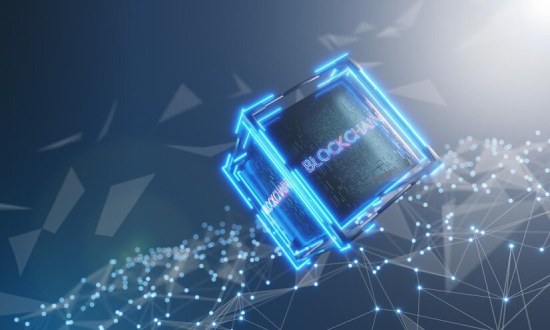-
The intersection of blockchain development with physical infrastructure has given rise to Decentralized Physical Infrastructure Networks (DePIN), a transformative concept poised to revolutionize how physical systems are managed and operated. DePIN combines blockchain's decentralization and transparency with real-world infrastructure, empowering individuals, businesses, and communities to contribute resources and participate in governance. By aligning physical infrastructure with decentralized principles, DePIN creates new economic opportunities and addresses inefficiencies inherent in traditional infrastructure models.
This comprehensive guide explores DePIN's fundamentals, operational mechanics, use cases, and technical framework while highlighting its potential to reshape industries. Whether you're a developer, business leader, or blockchain enthusiast, this guide provides an in-depth understanding of DePIN and actionable insights into its applications.
Introduction to Decentralized Physical Infrastructure Networks (DePIN)
DePIN represents a new paradigm in managing physical infrastructure, enabling decentralization, transparency, and tokenized incentives. At its core, DePIN utilizes blockchain technology to connect and manage physical assets such as IoT devices, renewable energy grids, or telecommunication networks, creating a collaborative environment where contributors and users benefit equally.
Key Features
- Decentralization: Eliminates the need for centralized control, distributing decision-making authority across participants.
- Tokenized Incentives: Rewards contributors with tokens for providing or maintaining resources.
- Transparency and Trust: Blockchain ensures immutable and verifiable records of operations.
- Programmable Governance: Smart contracts automate operations, ensuring efficiency and fairness.
Example Use Cases
- Helium Network: Decentralized IoT connectivity through participant-deployed hotspots.
- Filecoin: Incentivized decentralized data storage.
DePIN aligns with blockchain's ethos of democratization, creating opportunities for both individuals and enterprises to actively participate in infrastructure governance and monetization.
Also, Check | Top DePin Crypto Projects 2024
The Role of DePIN in Transforming Infrastructure
Traditional infrastructure systems face challenges such as high costs, inefficiencies, and vulnerabilities stemming from centralized control. DePIN addresses these challenges by introducing a decentralized, collaborative model that incentivizes contributors and empowers users.
Key Impacts
Economic Efficiency: DePIN reduces reliance on intermediaries, lowering operational costs.
Inclusivity: Anyone with resources, such as bandwidth or storage, can participate and earn rewards.
Resilience: Decentralized systems are inherently more robust against disruptions and failures.
Relevance in Today's Digital Economy
Addressing Digital Divides: DePIN democratizes access to critical infrastructure, especially in underserved regions.
Driving Sustainability: Incentivizes clean energy production and resource optimization.
Empowering Data Ownership: Shifts control from centralized entities to individuals, enabling data sovereignty.
By leveraging decentralized principles, DePIN unlocks new possibilities for businesses and communities, fostering innovation and inclusivity in critical infrastructure sectors.
Also, Read | Liquid Democracy | Transforming Governance with Blockchain
Technological Building Blocks of DePIN
DePIN combines several technological components to manage physical resources in a decentralized manner. Understanding these components is essential to grasp DePIN's architecture and functionality.
Blockchain Technology
- Consensus Mechanisms: DePIN leverages Proof of Stake (PoS), Proof of Coverage (PoC), or other mechanisms to secure the network.
- Smart Contracts: Automate resource management, rewards distribution, and governance processes.
- Layer-2 Solutions: Enhance scalability and reduce transaction costs by processing transactions off-chain.
IoT Devices and Physical Assets
- IoT devices, such as sensors and routers, connect physical infrastructure to blockchain systems.
- Edge Computing: Processes data locally on IoT devices, reducing latency and bandwidth usage.
Oracles
- Oracles bridge on-chain and off-chain data, enabling blockchain systems to interact with real-world information like energy usage, weather, or device status.
Tokenization
- Resources are monetized using tokens, which serve as incentives for contributors and payment methods for users.
Together, these components create a robust and scalable architecture that powers DePIN's decentralized infrastructure.
Also, Discover | Building a Custom Blockchain Consensus Mechanism
How DePIN Operates: A Step-by-Step Breakdown
DePIN integrates physical infrastructure with blockchain technology to create a seamless, decentralized system. Here's how it works:
Step 1: Infrastructure Deployment
Participants deploy physical assets such as IoT devices, routers, or energy meters. These devices register on the blockchain through smart contracts, which track their availability and performance.
Step 2: Data Validation
Validators ensure that data generated by the devices is accurate and trustworthy. This process often relies on consensus mechanisms like Proof of Coverage.
Step 3: Blockchain Integration
Smart contracts record contributions and manage resource allocation, governance, and rewards distribution.
Step 4: Tokenized Rewards
Participants earn tokens based on metrics like uptime, bandwidth provided, or energy generated. Tokens can be traded, used within the network, or staked for additional rewards.
Step 5: Service Access
End-users access infrastructure services (e.g., wireless connectivity, file storage) by paying fees in tokens. This creates a circular economy that sustains the network.
Industry Applications of DePIN
DePIN has wide-ranging applications across multiple industries, each benefiting from its decentralized and collaborative nature.
a. Telecommunications
- Use Case: Helium Network's decentralized IoT connectivity.
- Impact: Expands coverage in remote areas and reduces dependency on traditional telecom providers.
b. Renewable Energy
- Use Case: Peer-to-peer energy trading platforms like Power Ledger.
- Impact: Encourages clean energy production and optimizes energy distribution.
c. Supply Chain and Logistics
- Use Case: IoT-enabled tracking systems integrated with blockchain.
- Impact: Enhances transparency, reduces fraud, and ensures compliance.
d. Cloud Computing and Data Storage
- Use Case: Decentralized storage solutions like Filecoin.
- Impact: Provides cost-effective, secure alternatives to centralized cloud providers.
e. Transportation
- Use Case: Decentralized ride-sharing or logistics networks.
- Impact: Reduces costs and eliminates intermediaries, benefiting drivers and users.
You might also like | Can Blockchain Solve Creators' Copyright Challenges?
Benefits and Strategic Opportunities of DePIN
Benefits for Businesses
- Cost Savings: Lower operational costs through decentralized resource management.
- Scalability: Infrastructure grows dynamically as more participants contribute.
- Transparency: Blockchain ensures verifiable and immutable operations.
Opportunities for Developers
- Building innovative use cases that combine blockchain and IoT technologies.
- Developing tokenomics models to sustain decentralized economies.
Empowering Communities
- Creates earning opportunities for contributors in underserved areas.
- Promotes sustainable practices, such as energy sharing and waste reduction.
Challenges and Barriers in Implementing DePIN
Despite its potential, DePIN faces several challenges:
a. Technical Challenges
- Interoperability: Ensuring seamless communication between blockchains and physical devices.
- Energy Consumption: Managing the power requirements of IoT devices and blockchain operations.
b. Regulatory Hurdles
- Governments may impose restrictions on decentralized systems due to concerns over control and compliance.
c. Adoption Resistance
- Convincing traditional industries to transition from centralized to decentralized models requires education and proof of value.
Also, Explore | Blockchain-Based Streaming for Fairer Content Monetization
Technical Guide to Building a DePIN Solution
Developing a DePIN solution involves multiple steps, requiring expertise in blockchain, IoT, and distributed systems.
Step 1: Define Objectives
Identify the infrastructure problem to solve, such as extending wireless connectivity or decentralizing energy grids.
Step 2: Select Blockchain Technology
- Public Blockchains: Ethereum, Solana for open networks.
- Private Blockchains: Hyperledger for enterprise use cases.
Step 3: Develop Smart Contracts
- Automate tasks like resource validation, rewards distribution, and governance.
Step 4: Deploy IoT Devices
- Establish secure communication between devices and the blockchain.
Step 5: Implement Tokenomics
- Design token models that incentivize participation while maintaining economic stability.
Real-World Case Studies: Successful DePIN Implementations
Helium Network
- Focus: Decentralized IoT connectivity.
- Success: Over 1 million hotspots deployed worldwide, covering urban and rural areas.
Filecoin
- Focus: Decentralized data storage.
- Success: Over 18 million terabytes of storage provided, enabling secure and cost-effective file hosting.
Power Ledger
- Focus: Peer-to-peer energy trading.
- Success: Deployed in multiple countries, enabling energy producers to sell directly to consumers.
Future Directions and Innovations in DePIN
a. AI Integration
Machine learning models enhance resource allocation and predictive analytics.
b. Cross-Chain Protocols
Enable seamless interaction between multiple blockchains.
c. Climate-Positive Initiatives
Use DePIN to facilitate carbon credit trading and track environmental impact.
You might also be interested in | 2024 Blockchain Insurance Market: Explosive Growth And Gains
FAQs About DePIN
How does DePIN differ from traditional infrastructure?
DePIN decentralizes management, empowering participants to contribute and earn rewards while ensuring transparency.
What industries can benefit from DePIN?
Telecommunications, renewable energy, logistics, and data storage are among the key industries poised to benefit.
What are the risks of DePIN?
Risks include regulatory challenges, technological barriers, and adoption resistance.
Conclusion
Decentralized Physical Infrastructure Networks (DePIN) are reshaping industries by combining blockchain's transparency and decentralization with physical infrastructure's real-world impact. As businesses and communities adopt DePIN, they unlock opportunities to build scalable, resilient, and inclusive systems that benefit all participants. By understanding and leveraging DePIN, you can stay ahead in the rapidly evolving world of decentralized technology. If you are looking to build your DePIN project, connect with our skilled blockchain developers to get started.

Our Offices
INDIA
Emaar Digital Greens, Sector 61,
Gurugram, Haryana
122011.
Welldone Tech Park,
Sector 48, Sohna road,
Gurugram, Haryana
122018.















